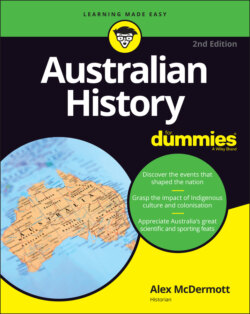Читать книгу Australian History For Dummies - Alex McDermott - Страница 87
LAYING A CLAIM IN VAN DIEMEN’S LAND
ОглавлениеAlthough Abel Tasman sighted the coast of Tasmania in 1642, he was too modest to call it Tasmania — that name didn’t happen until the 1850s. Instead, he called it Van Diemen’s Land. He didn’t stop for long, though, passing on to other explorations.
British settlement in Van Diemen’s Land began in 1803. Governor King of NSW got worried about the continued interest the pesky French seemed to be showing in the region, and sent off a small party to establish a settlement there. The British Government were getting the same idea, and sent out their own settlement party under David Collins. Soon the towns of Hobart and Launceston were established on the south and north coasts of the island, and Collins got to enjoy the unique experience of being largely ignored by both NSW and Britain. Hardly any ships were sent with further supplies and, as with the first years of NSW, starvation threatened. Collins gave many of the convict and other settlers weapons to go off into the ranges and hunt kangaroos to bring back for food. Unsurprisingly, plenty of the armed roo-hunting convicts decided life out beyond the confines of settlement ranging the bush was preferable to starvation with Collins, and didn’t come back. They took to raiding huts and isolated farms, and soon enough a new word emerged to describe this phenomenon — bushranging. (You can follow some of the individual bushranging exploits in Van Diemen’s Land in Chapter 6.)
